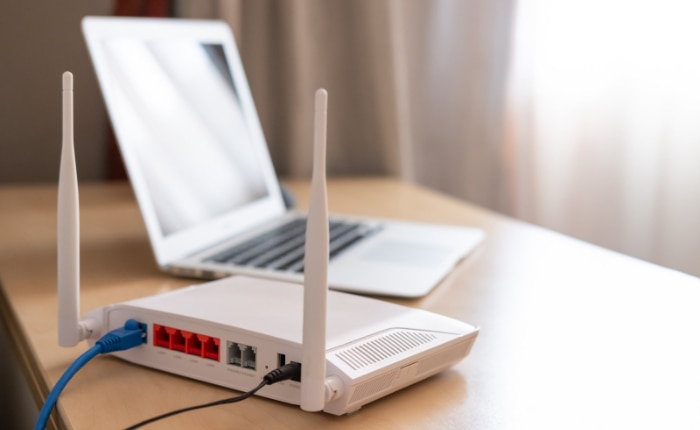What Is DHCP And How Does It Work? The Core of Connectivity

Connecting to a network might feel effortless, from accessing Wi-Fi at home to joining a workplace system, but behind the scenes, a powerful protocol called DHCP (Dynamic Host Configuration Protocol) makes it all possible. By automatically assigning IP addresses to devices, DHCP eliminates the hassle of manual configuration and ensures devices can communicate seamlessly.
This protocol has become essential for networks of all sizes, offering simplicity, reliability, and scalability. Whether you are managing a small home setup or overseeing a massive enterprise infrastructure, DHCP plays a critical role in maintaining smooth operations.
Understanding DHCP
Dynamic Host Configuration Protocol, or DHCP, is a fundamental part of modern networking that automates the process of assigning IP addresses to devices within a network. Without DHCP, network administrators would face the tedious task of manually configuring each device, an approach often prone to errors and inefficiencies.
DHCP simplifies this by distributing IP addresses dynamically, ensuring that every device receives a unique address needed to communicate effectively.
The protocol is highly efficient in managing IP address allocation, particularly in environments with a large number of devices, such as offices, schools, or public spaces. By automating these tasks, DHCP not only saves time but also reduces the risk of issues like IP address conflicts, which can disrupt network performance.
Historical Context
The origins of DHCP date back to the challenges of early networking. Before the advent of DHCP, networks relied on more manual or semi-automated methods for IP address configuration.
One such predecessor was the Bootstrap Protocol (BOOTP), introduced in the 1980s to help devices obtain basic configuration information. While BOOTP addressed some challenges, its limitations became apparent as networks grew in scale and complexity.
In 1993, DHCP was introduced to overcome these shortcomings with greater flexibility and automation, marking a significant improvement over BOOTP. DHCP was designed not only to streamline IP management for IPv4 networks but also to accommodate the eventual transition to newer standards like IPv6.
Today, DHCP remains a cornerstone of both IPv4 and IPv6 networks, ensuring seamless communication across devices of all types.
How DHCP Works

DHCP operates through a well-coordinated process that enables devices on a network to automatically receive IP addresses and other essential configuration details. It uses a client-server communication model where the device requesting an IP address acts as the client, and the system providing the configuration acts as the server.
This interaction is seamless, ensuring devices connect to the network without manual intervention while maintaining efficiency and consistency across the system.
The Client-Server Model
The client-server model is at the core of how DHCP works. When a device (the client) connects to a network, it needs an IP address to communicate with other devices.
To obtain this, it sends a broadcast message known as DHCP Discover, essentially asking, “Is there a DHCP server available to assign me an IP address?”
If there is a DHCP server within the network, it responds with a DHCP Offer, which includes an available IP address and other configuration details. The client then sends a DHCP Request message to confirm its intent to use the offered IP address.
Finally, the server acknowledges this with a DHCP Acknowledgment, officially assigning the IP address to the device. This entire exchange happens quickly, ensuring minimal delay in connecting devices to the network.
This structured communication ensures smooth IP allocation and helps avoid issues like duplicate IP addresses, which can cause devices to lose connectivity.
Key Configuration Parameters
DHCP does more than just assign IP addresses. As part of the process, the server provides additional configuration parameters that are critical for proper networking.
These include the subnet mask, which defines the size of the network, and the default gateway, which specifies the router that connects the device to other networks or the internet.
Another essential parameter is the DNS (Domain Name System) server address, which allows the device to resolve human-readable domain names (like example.com) into IP addresses. Additionally, the server sets a lease time, which determines how long the assigned IP address is valid before the client needs to renew it.
These configuration details not only establish connectivity but also enable devices to function effectively within the network.
Leases and Renewals
When a DHCP server assigns an IP address to a device, the assignment is not permanent. Instead, it is provided on a lease basis. This means that the device can use the address for a specified period, after which it must either renew the lease or request a new one.
The leasing system has several advantages. It ensures efficient use of IP addresses, particularly in networks where devices connect and disconnect frequently, such as guest networks, schools, or public Wi-Fi hotspots.
If a device disconnects and does not renew its lease, the IP address is returned to the pool of available addresses, allowing it to be reassigned to another device.
Renewals typically occur automatically before a lease expires. The client sends a renewal request to the DHCP server, and if the client still meets the network’s requirements, the server extends the lease.
This process ensures that devices maintain uninterrupted connectivity without manual intervention.
Benefits of DHCP

Dynamic Host Configuration Protocol (DHCP) has transformed network management by simplifying how devices connect and communicate. Its automated approach to IP address allocation offers a wide range of benefits, making it a preferred choice for modern networks of all sizes.
Automation and Efficiency
One of the most significant advantages of DHCP is its ability to automate the process of assigning IP addresses to devices. Instead of requiring administrators to manually configure each device, DHCP takes over this responsibility and ensures that every new device joining the network is automatically given a valid IP address.
Automation not only saves time but also reduces the risk of human errors, such as assigning duplicate IP addresses, which can result in connectivity issues.
Because the protocol handles configurations like subnet masks, DNS servers, and gateways, administrators no longer need to spend time on repetitive tasks. This level of automation improves operational efficiency and allows IT teams to focus on more strategic tasks rather than troubleshooting basic network setup issues.
Scalability
As networks grow in size and complexity, the need for a system that can scale effectively becomes crucial. DHCP is designed to meet this demand by working seamlessly in environments with dynamic or expanding requirements.
For example, in an enterprise setting with hundreds or thousands of devices, DHCP ensures that new devices can easily integrate without adding pressure to the existing network infrastructure.
Mobile devices and IoT (Internet of Things) devices further highlight the importance of scalability. With devices frequently joining and leaving networks, DHCP adapts effortlessly, ensuring smooth operations without manual intervention.
This capability is especially important in environments such as airports, schools, and offices, where device connections are constantly fluctuating.
Centralized Management
Managing a network with multiple devices requires a clear and centralized approach to IP address allocation, and DHCP simplifies this process. By maintaining IP address pools and configuration settings in one location—typically a DHCP server—administrators can monitor and control the entire setup without navigating individual devices.
Centralized management also makes it easier to implement changes across the network. For instance, if a new DNS server address needs to be applied, administrators can update the configuration on the DHCP server, and the changes are distributed automatically to all devices during the next lease renewal.
This eliminates the need for manual updates and reduces the likelihood of inconsistencies.
Challenges and Limitations

While DHCP provides numerous advantages in simplifying network management and automating IP address allocation, it is not without its challenges and limitations. Like any technology, it has areas that require careful consideration to ensure smooth operation and security.
Security Concerns
One of the primary challenges associated with DHCP is its vulnerability to security risks. Because DHCP operates without built-in authentication mechanisms, it can be exploited by rogue DHCP servers.
These unauthorized servers mimic legitimate ones, sending incorrect IP configurations to devices, which can disrupt network operations or redirect traffic to malicious destinations. This type of attack, commonly known as a “man-in-the-middle” attack, poses a significant threat to network integrity.
In addition, unauthorized access to the network itself is a concern. Devices that connect to a DHCP-enabled network automatically receive an IP address and access to related resources.
Without measures such as network access control or device authentication, it can be difficult to prevent unauthorized devices from connecting.
Organizations must implement supplementary security practices, such as switch port security, network monitoring, or using trusted DHCP servers, to address these risks and strengthen overall network protection.
Operational Risks
Another challenge of deploying DHCP lies in its operational dependencies. Since DHCP relies on a server to allocate IP addresses, it creates a single point of failure.
If the server becomes unavailable due to hardware issues, misconfiguration, or attacks, devices on the network may be unable to obtain an IP address, resulting in connectivity problems.
To mitigate this risk, many networks include failover mechanisms, such as backup DHCP servers, to maintain availability. However, this adds complexity and requires proper planning.
Additionally, in networks with multiple subnets or segments, DHCP servers cannot communicate directly with all devices, especially those on separate network segments. Relay agents are required to forward DHCP messages between the server and devices on different subnets.
While effective, this setup introduces additional dependency on relay agents, which could complicate troubleshooting and maintenance.
Static vs. Dynamic Addressing
Although DHCP’s dynamic nature is its primary strength, there are situations where static IP addressing may still be preferred. For example, devices that provide critical or permanent services, such as servers, printers, or network storage systems, often require fixed IP addresses to ensure consistent connectivity and reliability.
In such cases, a dynamically assigned IP address may change over time due to lease expirations or server configurations, which could disrupt services that depend on a persistent address. While DHCP can accommodate static configurations (often referred to as DHCP reservations), administrators must carefully decide when static addressing is more appropriate and implement it alongside dynamic assignments as needed.
Balancing dynamic and static addressing strategies is essential for maintaining a functional and secure network, especially in environments where different types of devices coexist with varying requirements.
Applications and Advanced Features

DHCP is more than just a tool for assigning IP addresses; it is a versatile protocol that supports a wide range of networking environments and offers features to enhance reliability, usability, and scalability. Its applications span from small residential networks to vast enterprise systems, and its advanced capabilities ensure it remains relevant in modern networking environments, including those relying on IPv6.
Use Cases
DHCP plays a crucial role in residential networks, such as those managed by home routers. In these settings, it eliminates the need for users to manually assign IP addresses to each device.
Whether it’s a smartphone, laptop, smart TV, or gaming console, DHCP ensures seamless connectivity by automatically providing the required network configuration. This convenience is especially valuable in homes where multiple devices connect and disconnect frequently.
In enterprise environments, the importance of DHCP becomes even more apparent. Large organizations with hundreds or thousands of devices rely on DHCP to streamline network management.
Without the protocol, maintaining unique IP addresses for every device would be a time-consuming and error-prone task. DHCP enables dynamic allocation, making it possible for organizations to manage everything from employee workstations to IoT devices efficiently.
Furthermore, the scalability of DHCP allows enterprises to adapt as their networks grow or change, supporting new devices and users without disruption.
Advanced Features
For networks requiring high availability and resilience, DHCP offers advanced features such as failover capabilities. With DHCP failover, two servers can work together to ensure uninterrupted service.
If the primary server becomes unavailable due to hardware failure or other issues, the secondary server takes over, preventing devices from losing their IP addresses or network connectivity. This redundancy is particularly beneficial in critical environments where downtime can impact productivity or operations.
Another advanced feature is DHCP integration with DNS (Domain Name System). This combination simplifies device identification within a network.
For example, when a device is assigned an IP address by DHCP, the server can automatically update the DNS records with the device’s hostname and corresponding IP address. This makes it easier to locate devices on the network and supports seamless communication between systems.
These advanced features improve network reliability and simplify management, particularly in settings where uptime and accurate device identification are essential.
IPv6 Support
As the world transitions from IPv4 to IPv6 due to the growing number of internet-connected devices, DHCP has adapted to meet the new requirements. DHCPv6 is an updated version of the protocol designed specifically for IPv6 networks.
While IPv6 includes an inherent mechanism for automatic address configuration called SLAAC (Stateless Address Autoconfiguration), DHCPv6 adds greater control and flexibility.
With DHCPv6, administrators can provide additional configuration details beyond just IP addresses, such as specifying DNS servers or defining lease times. This level of control is particularly useful in enterprise environments where consistency and precision are critical.
DHCPv6 also supports dynamically updated IP address assignments, ensuring that devices can seamlessly integrate into the broader IPv6 network while maintaining ease of management.
Conclusion
DHCP has proven to be an essential protocol for simplifying and streamlining network management. From automating IP address assignment to supporting large-scale enterprise networks, its role in ensuring efficiency and reliability cannot be overstated.
By enabling seamless connectivity and adaptability, DHCP allows networks to accommodate the growing number of devices in modern environments, including mobile and IoT technologies.
While it offers numerous benefits, such as automation, scalability, and centralized management, it is also important to account for its challenges, including security risks and operational dependencies. With proper planning, advanced features like DHCP failover, DNS integration, and support for IPv6 can address many of these issues, ensuring that networks remain robust and flexible.
Overall, DHCP continues to play a crucial role in maintaining the connectivity and efficiency needed for networks to thrive in both residential and enterprise settings. Its ability to evolve alongside technological advancements cements its place as a foundational component of modern networking infrastructure.


